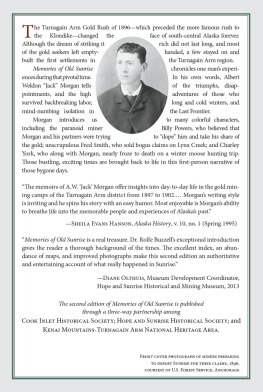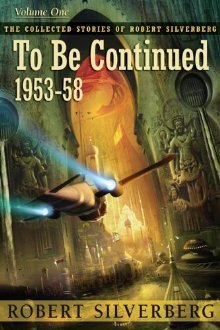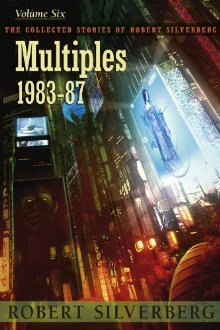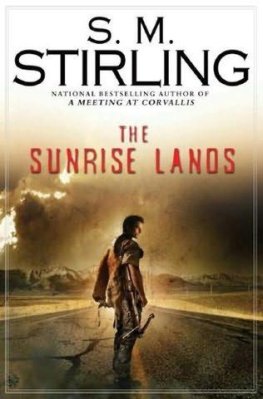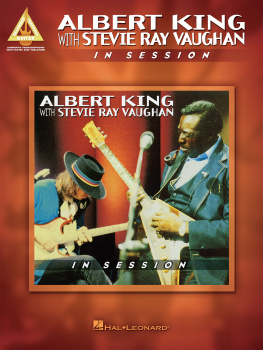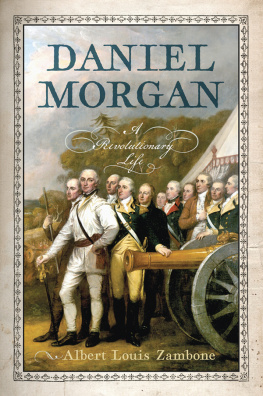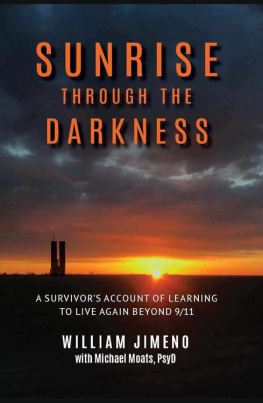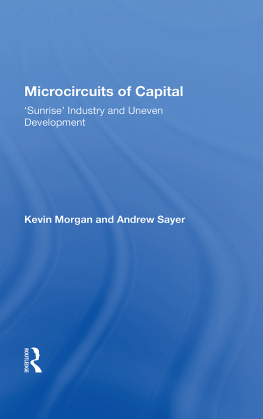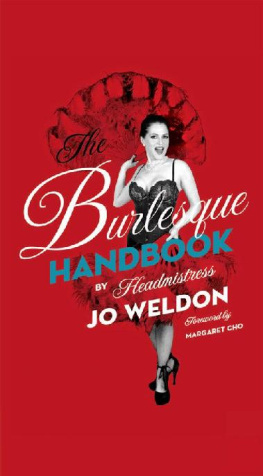Albert Weldon Morgan - Memories of Old Sunrise
Here you can read online Albert Weldon Morgan - Memories of Old Sunrise full text of the book (entire story) in english for free. Download pdf and epub, get meaning, cover and reviews about this ebook. publisher: BookBaby, genre: Detective and thriller. Description of the work, (preface) as well as reviews are available. Best literature library LitArk.com created for fans of good reading and offers a wide selection of genres:
Romance novel
Science fiction
Adventure
Detective
Science
History
Home and family
Prose
Art
Politics
Computer
Non-fiction
Religion
Business
Children
Humor
Choose a favorite category and find really read worthwhile books. Enjoy immersion in the world of imagination, feel the emotions of the characters or learn something new for yourself, make an fascinating discovery.
- Book:Memories of Old Sunrise
- Author:
- Publisher:BookBaby
- Genre:
- Rating:5 / 5
- Favourites:Add to favourites
- Your mark:
- 100
- 1
- 2
- 3
- 4
- 5
Memories of Old Sunrise: summary, description and annotation
We offer to read an annotation, description, summary or preface (depends on what the author of the book "Memories of Old Sunrise" wrote himself). If you haven't found the necessary information about the book — write in the comments, we will try to find it.
Memories of Old Sunrise — read online for free the complete book (whole text) full work
Below is the text of the book, divided by pages. System saving the place of the last page read, allows you to conveniently read the book "Memories of Old Sunrise" online for free, without having to search again every time where you left off. Put a bookmark, and you can go to the page where you finished reading at any time.
Font size:
Interval:
Bookmark:

PHOTOGRAPHS AND MAPS
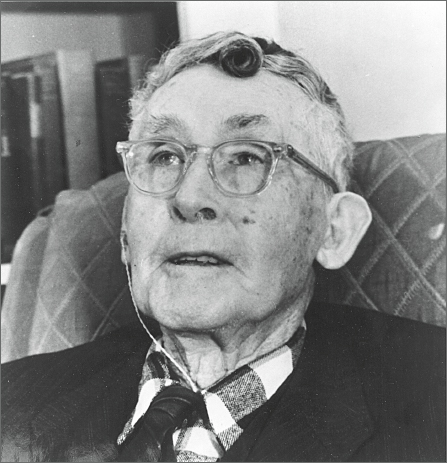
A. W. Jack Morgan, late 1950s.
FOREWORD
BY R OBERT B OB J. M ORGAN
M emories of Old Sunrise was written by my grandfather, A. W. Jack Morgan, at the grand age of ninety-two. It is his account of his years in Alaska from 1897 to 1901 mining for gold on the Kenai Peninsula. I hope that his recollections will prove to be of value to serious Alaska historians and that they will also provide enjoyment to those who, like myself, have developed a keen interest in the early days of gold mining in Alaska.
My grandfather was born and raised on a small farm near Franklin, North Carolina. About all I know of his parents was that his father had a Minie ball left inside his elbow as a result of serving in the Confederacy during the Civil War. At the age of sixteen my grandfather set out on his own as there was not much opportunity for him on the farm or in that part of the country. He worked his way across the country on the railroads to the Pacific Northwest where he found steady work in the logging camps. He was twenty-nine years old and working with a partner as a gippo logger when he decided to try his hand at gold mining in Alaska.
A few years after he returned from Alaska my grandfather and grandmother took a homestead on the Siletz River which is in Lincoln County, Oregon and flows into the Pacific Ocean. He continued to work in logging and over time became recognized as the leading timber cruiser in Lincoln County. In the 1920s or early 1930s he moved to Portland, Oregon, and worked as both a timber cruiser and timber broker. At the age of eighty-eight, he set down his experiences in Lincoln County in his earlier book titled Fifty Years in Siletz Timber (published privately in 1959).
I have often marveled at the fact that my grandfather waited until so late in his life to put into writing his many interesting experiences and recollections. I think the answer, in part, lies in the unusual ruggedness of his constitutionboth physical and mental. Almost anyone who had walked with him in the woods was ready to attest to his endurance and he remained physically active well into his eighties. He neither drank nor smoked and did not approve of those who did. He never learned to drive an automobile-relying instead on his own two legs or his two sons and five grandsons for his transportation needs. He was a man who did not know the meaning of self-doubt, was set in his ways, had strong opinions on most subjects, was known for his fairness and honesty, and didnt like Democrats in office. He was simply such a strong and vigorous person that I think it was not until his late eighties that he began to realize that he would not be around forever and therefore should commit his recollections to writing.
My grandfather loved the Siletz River country. Some of my earliest memories of him were when he took me fishing in a rowboat on the Siletz for sea-run cutthroat and jack salmon. A few years after he died, my father sold some property on the Siletz to the county with the stipulation that it be used for a park in his memory. Today, picnickers and drift boaters are both able to make use of the A. W. Morgan County Park located about fifteen miles up the Siletz just above tidewater.
I have the fondest of memories of my grandfather and Memories of Old Sunrise has helped me to know and appreciate him all the more. I hope that all who read it will find it enjoyable and will, like me, be able to derive from it something that is personally meaningful.
Camas, Washington
May 5, 1988
ACKNOWLEDGEMENTS
I would like to acknowledge the libraries, museums, government agencies, private businesses, and individuals who provided assistance in the completion of this project.
Institutions that granted permission to reproduce photographs from their collections for this volume include the Elmer E. Rasmuson Library of the University of Alaska Fairbanks; the Alaska Historical Library in Juneau; the Anchorage Museum of History and Art; the Girdwood Historical Society; the Hope and Sunrise Historical Society in Hope; the Seward Public Library; the United States Geological Survey, Denver, Colorado; the Chugach National Forest, Anchorage; and the publishers of Alaska Sportsman in Anchorage.
Special thanks to Donald W. Clickner of Troy, New York, and Gerald C. Lansing of New Brunswick, New York, for allowing reproduction of photographs from their grandfathers expedition to Turnagain Arm in 1898. Nori Bowman of Fairbanks drew the initial maps. Daniel G. Williams of Aberdeen, Washington, provided explanations of hand logging terms. Steven C. Levi and Mike Burwell of Anchorage helped identify full names of several individuals mentioned in the manuscript. Eva Trautmann, of the publications committee of the Cook Inlet Historical Society, generously shared her time and editorial talents.
A number of members of the Morgan family were also helpful. David Duvall of Franklin, North Carolina, contributed photographs of Jack and Lovicia Morgan in their early years. I am especially grateful to Jack Morgans three grandsons: Robert J. Morgan of Rainier, Oregon; John Signor of Battleground, Washington; and the late James W. Signor of Portland, Oregon. They provided photographs of Jack and Lovicia Morgan and generously shared their knowledge about their grandparents.
Funding for this project has been provided in part by the State of Alaska, Gold Rush Centennial Task Force.
Rolfe Buzzell
Anchorage, Alaska
June 1994
INTRODUCTION 1994
B Y R OLFE G. B UZZELL , P H . D.
W hen Albert Weldon Morgan arrived in south-central Alaska in the spring of 1897, gold mining in the Turnagain Arm area had been underway for several years. Traces of gold were first reported in Alaska by Russians on the Kenai River in 1834 and again in 1850-1851. After the United States purchased Alaska in 1867, American prospectors began to search for precious metals in the largely unmapped territory. Gold was discovered in commercial quantities on tributaries of the upper Yukon River and in southeast Alaska in the 1880s. This led to prospecting in other parts of the territory. In 1890, a prospector named Alexander King paid off his grubstake at the old Russian trading post at Kenai with four pokes of gold obtained from panning on the northern coast of the Kenai Peninsula. Up to that time, the shallow waters and treacherous bore tides of Turnagain Arm had served to keep prospectors away. The discovery of gold by King attracted the attention of local prospectors, and in 1893 and 1894 claims were filed on Resurrection Creek and its tributaries. Discoveries on Canyon and Mills creeks the following year set off the first rush in which some 3,000 gold seekers flocked to the Turnagain Arm during 1896.
The large number of miners, the meager amounts of gold found on many of the creeks, and news of a richer gold strike in the Klondike fields of Canada resulted in a sharp drop in the number of people attracted to the Turnagain Arm district in 1897. Like others who arrived in 1897, Morgan found the most promising ground already staked by those who had arrived earlier. Opportunities were scarce for latecomers, who usually had no mining experience and limited money and supplies on which to live. Most were forced to work for wages, hoping to make a grubstake that would enable them to strike out on their own or to buy into a partnership on a good claim. Many exhausted their resources prospecting the less promising creeks or buying claims that proved to be worthless. For most, the dream of striking it rich faded quickly. A second rush of 7,000-10,000 people to Cook Inlet occurred in 1898, but it too was short-lived. Thereafter, the number of gold seekers rapidly declined as the disappointed returned to the states or moved on to the more promising prospects in the Klondike and Nome areas. Even Alexander King moved on to the Klondike, where he died on the gallows for killing a partner.
Font size:
Interval:
Bookmark:
Similar books «Memories of Old Sunrise»
Look at similar books to Memories of Old Sunrise. We have selected literature similar in name and meaning in the hope of providing readers with more options to find new, interesting, not yet read works.
Discussion, reviews of the book Memories of Old Sunrise and just readers' own opinions. Leave your comments, write what you think about the work, its meaning or the main characters. Specify what exactly you liked and what you didn't like, and why you think so.

